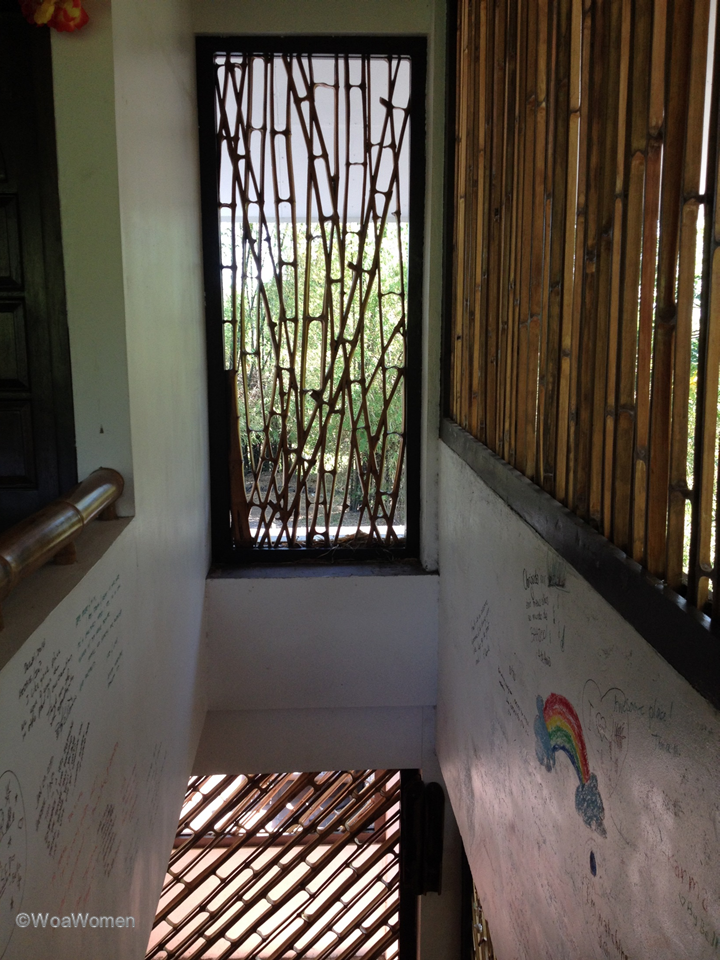In much dwindled numbers, our country still uses bamboo for indigenous houses in many of our provinces. The bahay kubo is still a much loved symbol of bucolic bliss.

The community practice of bayanihan - working together to move an entire house
to its new location - also connotes a spirit of communal unity and effort to
achieve a collective and cooperative objective.
It was a joy to return to Asia for the holidays and visit bamboo initiatives in Negros Island, in the Philippines and in Bali, Indonesia.
To stroll once again amidst lush bamboo groves, enjoy their cocooning
serenity, be lulled by the swish and sway of rustling leaves and creaking stalks.
We met with and shared stories among the visionaries and workers who lived in these communities and imbibed their mission.
Part of the crucial strategy is to promote the planting of indigenous bamboo for conservation and economic value to sustain local
communities and the country.
Children here are raised and instilled in the primal priorities of the land. In comfort and joy but with minimal interference - allowing nature's glory to thrive and flourish at its own pace.
It was inspiring and encouraging to see this application and effort expended with such care and consciousness.
May this indeed be the wave of our future.
P.S.
Bamboo is famous for quality building materials, making household and
commercial products, fencing poles and pulp. It also has nutritional value - the
shoots can be cooked and eaten as a vegetable while foliage can be used as
animal fodder.
Wood fuel and charcoal can be supplied through bamboo. Bamboo biochar
as organic additive for degraded soil has a great market potential. Clumps last
for about 40 years and rejuvenate more with regular harvesting. No additional
cultivation is needed and it grows in all climate zones and soil types.
It prevents soil erosion and withstands flooding and drought. Bamboo
acts as a carbon sink and absorbs excess carbon dioxide, reducing global
warming. It absorbs carbon dioxide and releases over 30% more oxygen into the
atmosphere compared to an equivalent stand of trees.
Bamboo is an excellent source of income for local communities. It has
the ability to produce more biomass per hectare than eucalyptus and pine.
[Bamboo Initiative Report 2013]
We thank our Dumaguete contingent - Herbie Teodoro and In-In Alviola-Teodoro of Bambusa Collabo, Jobert Koerkamp of Buglas Bamboo Institute for being so generous with their time and talent.
We also thank Danny and Elaine Urquico of CFSPI Foundation who brought us on this wondrous road trip!

















No comments:
Post a Comment
Note: Only a member of this blog may post a comment.